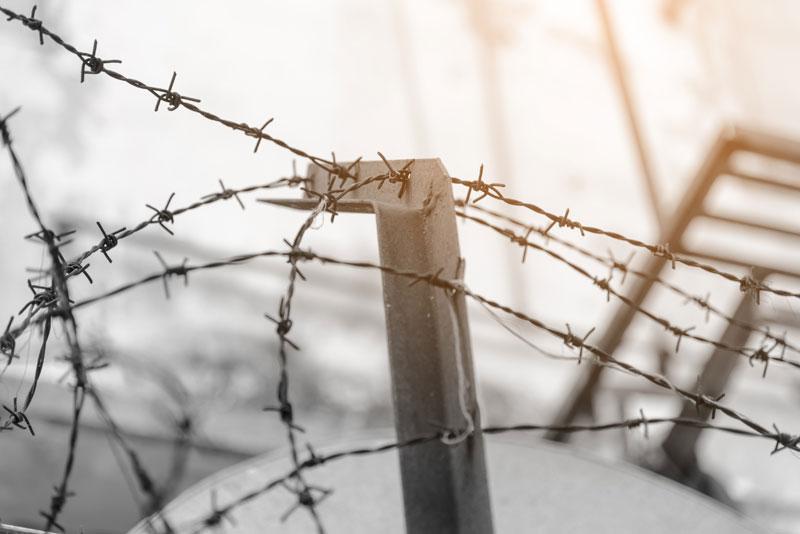
Adolf Hitler was appointed Chancellor of Germany on January 30, 1933. In April, a nationwide boycott of Jewish businesses began. Next came expulsion of Jews from civil, university, and state employment. Book burnings of the works of Jewish authors followed, along with the revocation of citizenship of Jewish immigrants and Gypsies. Then, laws were enacted to force the sterilization of the disabled. All of this was in the first five months of Hitler’s appointment.
In 1934, at the death of Germany’s president, Hitler took over as both President and Chancellor, becoming Fuhrer and gaining unlimited power over the nation.
In 1935, the Nuremberg Laws made Jewish people second-class citizens, and under the “Law for the Protection of the German Blood and Honor” they were prohibited from inter-marrying with Aryans.
In 1936, Jewish doctors were barred from practicing medicine in German hospitals, and voting rights of Jewish people were revoked. In 1937, the Buchenwald concentration camp opened.
In 1938, Germany required that all Jews in its realm register their property. More concentrations camps opened, all Jewish children were consigned to Jewish schools, and all Jews were required to surrender their driver’s licenses and car registrations. Thousands of Polish Jews were expelled.
On November 9-10, 1938, the Nazi’s orchestrated a simultaneous attack on Jewish communities throughout Germany and Austria. On Kristallnacht (Night of Broken Glass), bands of aggressors murdered 91 Jews, destroyed hundreds of synagogues, and ransacked and looted thousands of Jewish businesses, homes, schools, and hospitals. Tens of thousands of Jewish men were dragged off to concentration camps. Adding insult to injury, Hitler’s Reich fined German Jews one billion German marks for the damage done on Kristallnacht.
In 1939, the German territory expanded by force, and World War II erupted. Across the Nazi territories, things grew steadily worse for Jewish people.
In the following years, Jews would have their homes seized and were forced into ghettos to live under deplorable conditions. They were put under strict curfews, forced to surrender radios, and required to wear yellow Stars of David. More and more Jewish people were taken to concentration camps to be summarily executed or suffer a life of slave labor, starvation, torture, inhuman medical experiments, and unspeakable cruelties.
Concentration camps
Research by the United States Holocaust Memorial Museum (USHMM) revealed in 2013 that far more concentration camps and ghettos existed than were previously believed. So many, in fact, that fellow Holocaust scholars themselves asked if they’d heard correctly when the research team reported they had cataloged some 42,500 camps and ghettos spread throughout Europe (New York Times).
There were six Nazi “death camps,” all located in Poland (Museum of Tolerance). Auschwitz-Birkenau was comprised of three main camps and dozens of sub-camps. Forced to work a minimum 11-hour day, often in the bitter cold, prisoners survived the vicious, maniacal cruelty of guards, and received food rations barely enough to sustain them. Families were torn apart, husbands, wives, and children separated. Children, the elderly, and anyone too weak to work were sent to gas chambers disguised as shower facilities. Crematoriums spewed the smoke of the sickening, heart-wrenching reality amid which the prisoners existed. (Auchwitz.org)
On January 27, 1945, astonished Russian soldiers approached the gates of Auschwitz. One recounted, "We saw emaciated, tortured, impoverished people. We could tell from their eyes that they were happy to be saved…. Happy that now they weren't threatened by death in a crematorium” (CNN).
By the time Auschwitz was liberated, the camp had killed an estimated 1.1 to 1.5 million people (Auschwitz-Birkenau Memorial and Museum).
As more camps were liberated, the world grew aware of the horrors that took place within them. Such reports had to be exaggerations, didn’t they? Many people in distant nations thought so. Wisdom and foresight led President Dwight D. Eisenhower to make himself an eyewitness to the horrors of the Holocaust, intentionally touring “every nook and cranny” of the camp he visited.
“The things I saw [defy] description…. I made the visit deliberately, in order to be in position to give first-hand evidence of these things if ever, in the future, there develops a tendency to charge these allegations merely to ‘propaganda’” (Dwight D Eisenhower Presidential Library).
“I have never felt able to describe my emotional reaction when I first came face to face with indisputable evidence of Nazi brutality and ruthless disregard of every shred of decency...I visited every nook and cranny of the camp because I felt it my duty to be in a position from then on to testify at first-hand about these things in case there ever grew up at home the belief or assumption that the stories of Nazi brutality were just propaganda” (Remember.org).
With uncanny insight, Eisenhower provided evidence and testimony for people we never could have believed would exist, but today are known as Holocaust Deniers.
Many millions of people were killed at the hands of Hitler’s regime. Published totals vary, but all agree that six million Jewish people were killed in the Holocaust. Two-thirds of the Jewish people in the countries Germany conquered were killed – individuals with unique lives and stories, murdered (USHMM Holocaust Encyclopedia). The Holocaust is the most sickening example of unbridled anti-Semitism the world has ever seen. It was… a holocaust.1
“Those who cannot remember the past are condemned to repeat it.”2
1hol-o-caust (noun) – a great or complete devastation or destruction; any mass slaughter or reckless destruction of life (Dictionary.com).
2Winston Churchill’s famous quote of George Santayana’s historic observation (National Winston Churchill Museum).



